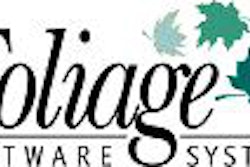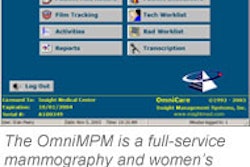Radiology has seen a plethora of innovations since the discovery of the x-ray by German physicist Wilhelm Roentgen. New modalities, contrast agents, and new techniques have propelled the science to the forefront of diagnostic medicine. In nearly a century of practice, however, the radiology report has seen little change.
"Most reports consist of a textual description of imaging findings followed by a brief summary, generally produced by speaking into a recording device followed by transcription," said Dr. David Weiss, clinical head of imaging informatics in the division of radiology at the Geisinger Medical Center in Danville, PA.
Weiss addressed the need to use technological advancements to improve the radiology report during a presentation at the 2004 Society for Computer Applications in Radiology in Vancouver.
"An ideal report has to be fast," Weiss said. "Our eyes have to be free to look at the images, our hands have to be free to control our PACS devices, and our minds have to be free -- we can't be thinking about what to use next or what icon to click. A reporting system has to be intuitive."
Currently there are two available reporting alternatives to traditional recording and transcription: speech recognition and structured reporting. Speech recognition mimics traditional reporting methods in that a user speaks into a microphone. The speech is transcribed into text on the fly, using a speech engine software application.
"This inherently creates a major advantage in turnaround time and the cost of transcription," Weiss said. "The downside is that of user frustration with the potential for increased distraction from image viewing, and for increased dictation time."
The most common implementation of structured reporting consists of software with menu options for multiple decision trees, which are in turn used to build a text report. The advantages are similar to those of speech recognition systems, including decreased turnaround time and transcription cost savings, according to Weiss.
"A unique disadvantage of this system is the need for the user's eyes to be removed from the images to create a report," he said.
Structured-reporting vendors have responded to this by integrating voice-navigation features into their products, Weiss noted.
"The major advantages of these systems are often not appreciated directly by the radiologists, but accrue to the hospital or healthcare system. The disadvantages, however, fall squarely on the radiologist's shoulders," he said.
However, with optimization of a few elements of alternative reporting technology, Weiss believes its use will result in improved system performance and greater acceptance among radiologists.
First and foremost among these is the interface between the RIS and the reporting system. Accurate demographic information must be passed from the RIS to the reporting software, and finalized text must be passed back to the RIS to be distributed and stored appropriately, he said.
Ideal navigation of an alternative reporting system, according to Weiss, should be an eyes-free, mind-free, and hands-free operation. As this is currently not available, Weiss offered a few suggestions on what to look for in system navigability.
"A navigation device or combination of devices should allow complete control using two or fewer hands without the need to reach for a third device on the desktop or elsewhere," he said. "Commands should be completely intuitive with little or no thought process involved in deciding which button to push next."
The use of macros -- standard text that can be used instead of dictating a new report each time, and templates, which are macros with spaces to be filled with new data -- is absolutely critical to minimize the potential time penalties of alternative reporting systems, Weiss said.
"Macros should be created to be simple and easy to modify using only voice commands, which will allow the reader's eyes to remain on the images while creating a report," he said.
Weiss also suggested that radiologists develop a logical plan for systematic macro naming across all modalities before creating the first macro for a system. This will allow the easy recall of a macro or a template as the number of stored macros increases.
"If set up correctly, very few phrases need to be dictated or created by decision tree during the course of a reading session," he said.
PACS integration with alternative reporting systems is a crucial element in the success of these strategies. RIS, PACS, speech recognition, and structured reporting software that is configured to run concurrently on the same platform is ideal, as this allows the use of one navigation device or devices to control all software systems.
"A good integration is critical in minimizing distractions and the potential time penalty with the use of reporting systems," Weiss noted. "A poor integration will increase the level of frustration and decrease acceptance among radiologists."
Still, the ultimate success of an alternative reporting system will come down to how radiologists accept the behavioral changes needed in comparison to traditional reporting strategies, Weiss said. He believes that combining the best features of RIS, PACS, speech recognition, and structured-reporting software, and carefully optimizing system use, can result in an ideal reporting system.
"The ideal system should coordinate data from all modalities and information systems and facilitate multichannel and multidirectional communication throughout the enterprise," he said.
By Jonathan S. BatchelorAuntMinnie.com staff writer
July 16, 2004
Related Reading
Speech recognition hits the mark, thanks to editors, June 8, 2004
SR evangelist touts technology's benefits, drawbacks, May 21, 2004
Imaging reports also benefit from improved signal-to-noise ratio, May 3, 2004
Speech recognition shows strength in teaching hospital, April 23, 2004
Machine language: Radiologist offers tips on optimizing speech recognition, February 4, 2004
Copyright © 2004 AuntMinnie.com



















